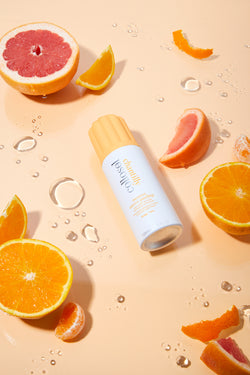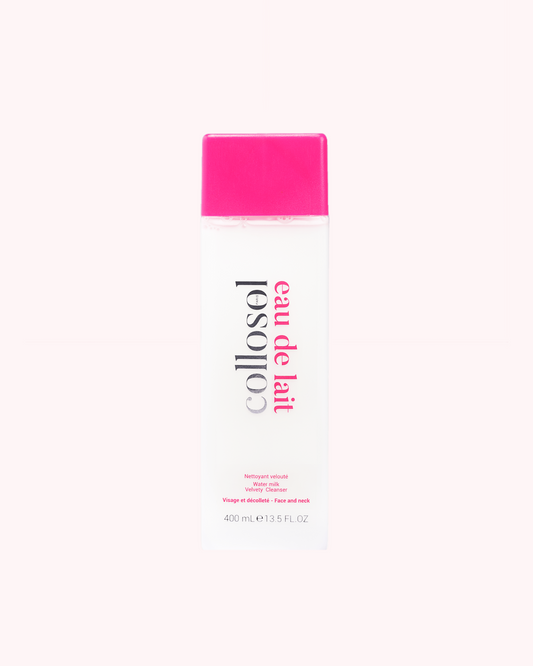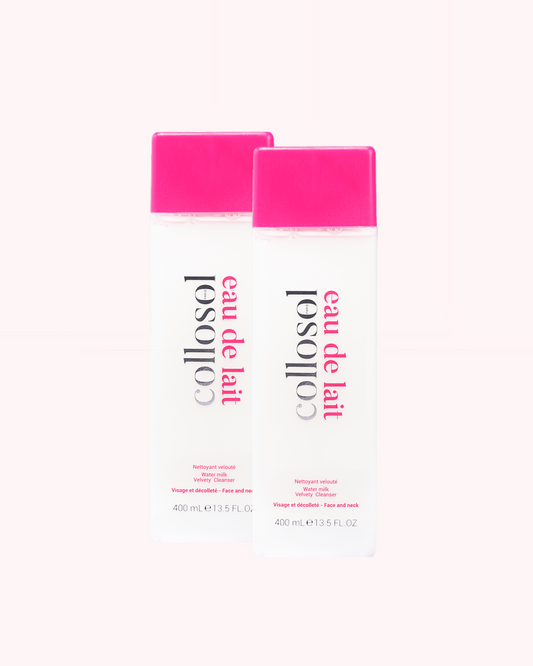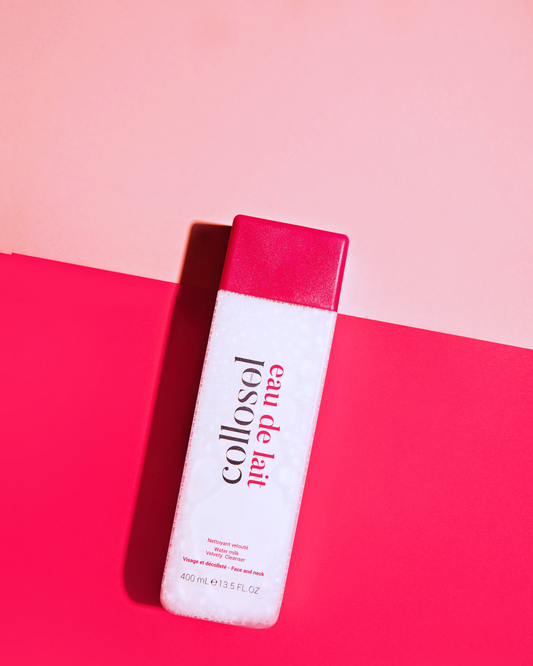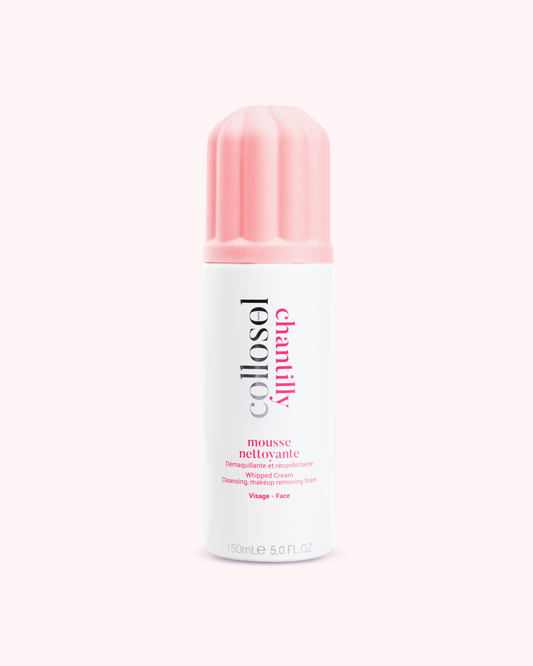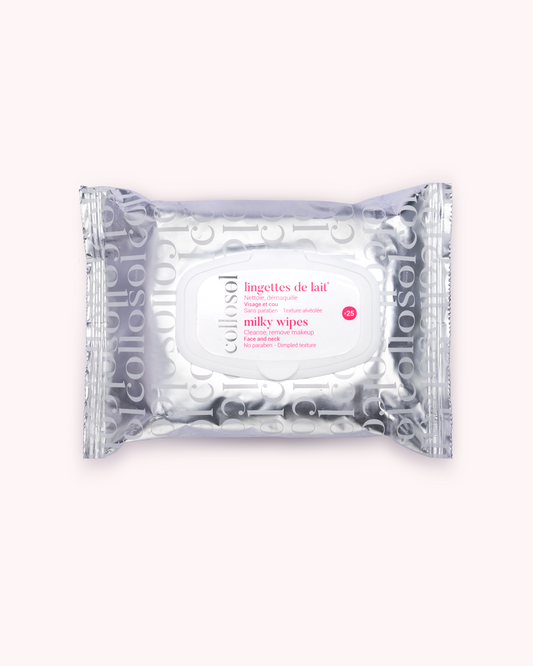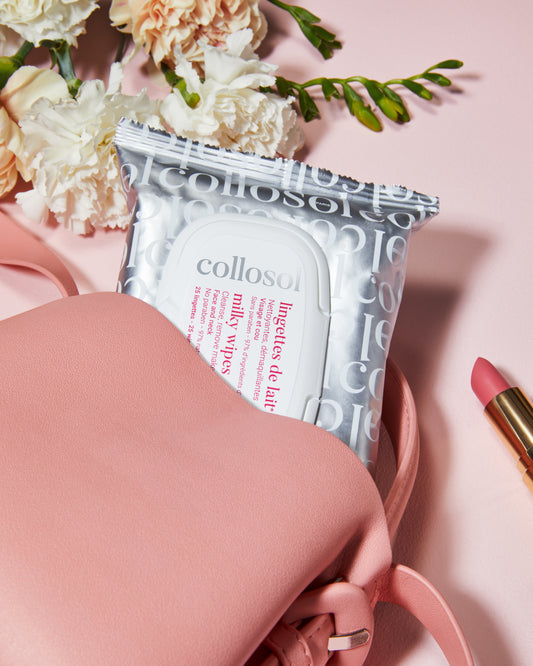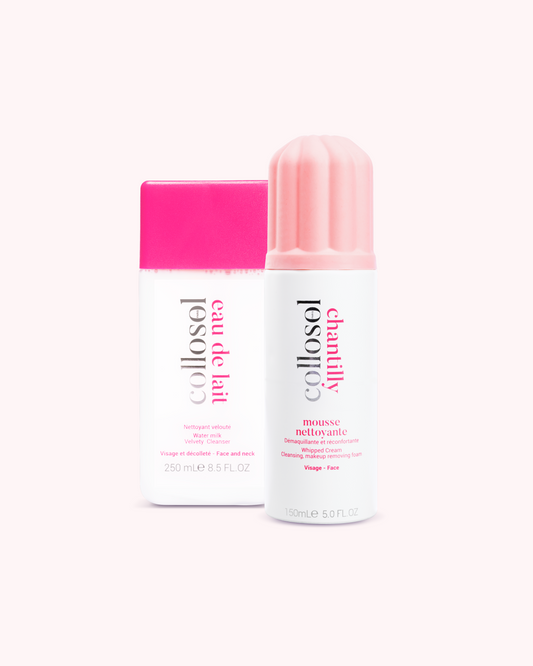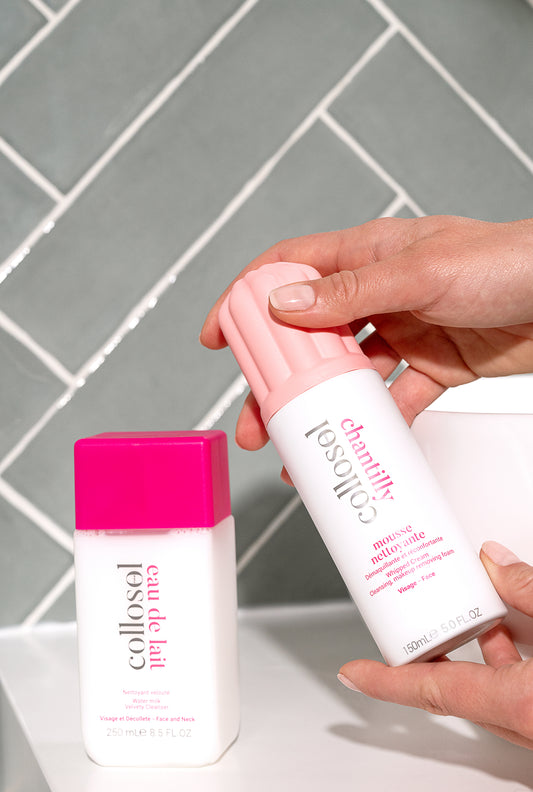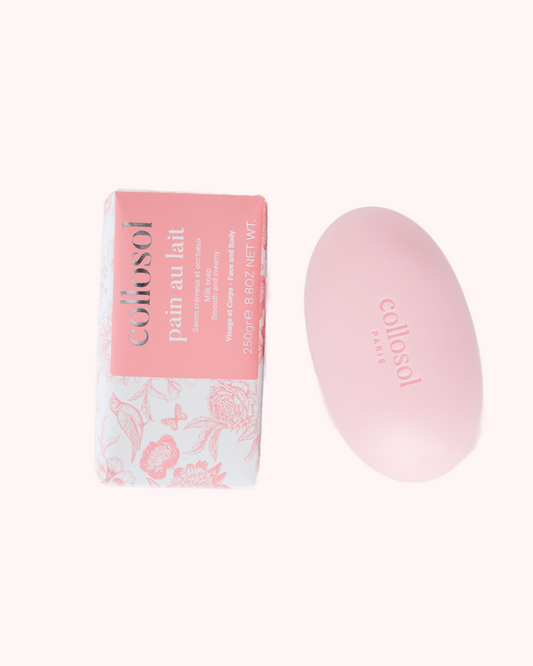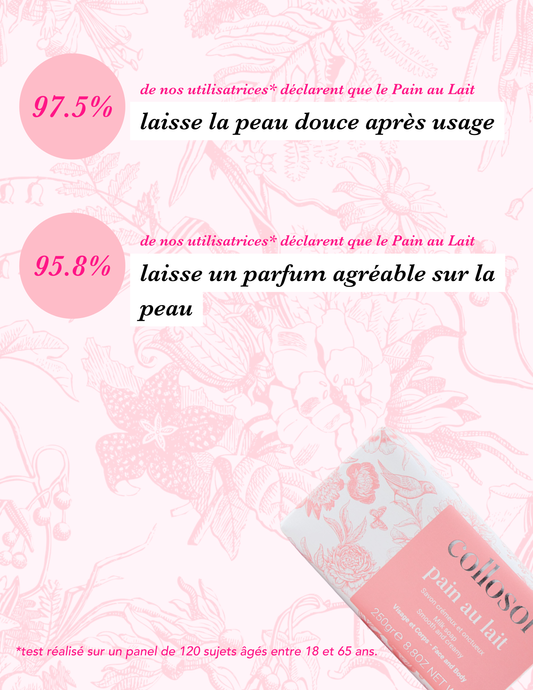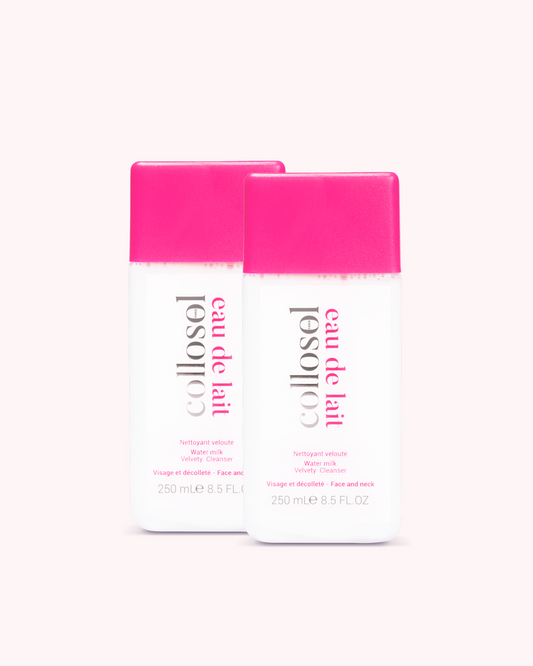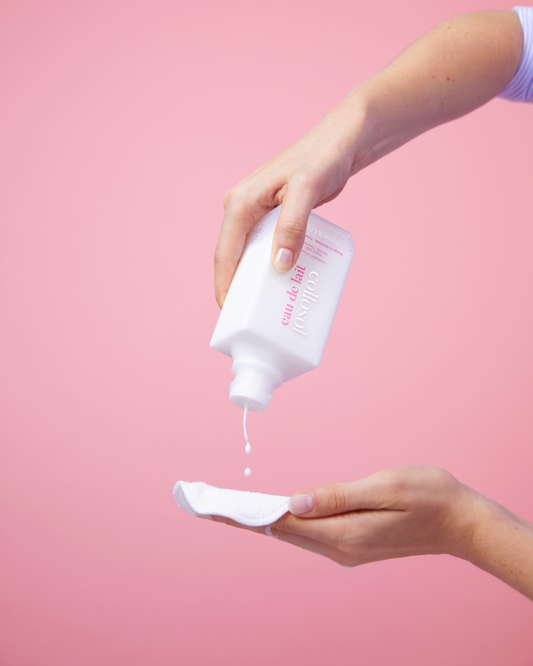What to do when your skin is dry?
Like all other skin types, dry skin has its share of inconveniences. Lack of radiance, tightness, discomfort, flaking, etc. All these signs should alert you to the condition of your skin. It is possible to soothe it by using the right care and by carrying out the right actions... As long as you know them! Collosol tells you everything about the care to give to dry skin. Healthy skin is also skin full of beauty!
Why do we have dry skin?
Dry skin corresponds to a skin type, like normal, oily or combination skin. But like the latter two, dry skin has a disruption in its hydrolipidic film. Made up of water and sebum, this skin barrier normally protects the epidermis against external aggressions (bad weather, pollution, etc.). But in the case of dry skin, the hydrolipidic film lacks lipids and cannot therefore fully ensure its protective functions. The skin on the face is more exposed and more likely to become sensitive and reactive.
Called xerosis in the medical field, these skin types have distinct signs: they tend to be tight, flaky, itchy, and in severe cases, can be cracked. They also result in a feeling of discomfort, especially after showering. The skin is often dull and lacks elasticity, and signs of aging like fine lines and wrinkles can quickly appear on the face if it is not given enough attention.
These skin types are often confused with dehydrated skin, which can show some of these signs. But their condition is often temporary and appears at specific times, such as in winter, when cold and wind can more easily weaken the skin.
Conversely, dry skin and other skin types are linked to our genetics and cannot be changed. However, this dryness can be aggravated by other factors:
− The external environment and climate: the extreme temperatures of winter and summer can further weaken the epidermis.
− Lifestyle: people living in urban areas are more exposed to pollution, which can attack dry skin and make it fragile.
− Using unsuitable products, which can further dry out the skin.
− A hormonal change, when taking medical treatment or during menopause, for example.
− A dermatological disease such as eczema or psoriasis, which require appropriate medical treatment and care
So, while dehydration can occur in all skin types, some dry skin is more sensitive to it than others. Their condition means that the lipid barrier does not retain water as well, and the skin then suffers from dehydration. And dehydrated skin means amplified dryness: facial skin can enter a vicious circle where its lack of hydration further weakens the hydrolipidic film and its protection.
Drinking plenty of water and using the right products that retain water in the skin are effective ways to treat dehydrated skin.
As for dry skin, if it cannot be changed, it can definitely be soothed. Because whether it is on the body or the face, dry skin is unpleasant and can quickly become uncomfortable. It is then enough to give it the attention it needs and to fill some of its gaps to give it back its primary function: to protect the body from invasions.
What to do when your skin is dry?
Like all other skin types, dry skin needs special attention. While their routine may be similar to that of other skin types, the products themselves are not the same. It is important to use care products that are adapted to your skin condition so as not to aggravate it and weaken your dry skin.
The dry skin routine begins with a double cleanse . The first treatment applied is, ideally, a makeup remover oil , which unclogs the skin and removes all the impurities that have accumulated on the face during the day (or night, if it is early in the morning). In addition to being effective against even the most stubborn makeup, makeup remover oils have the advantage of respecting the skin's hydrolipidic film. Argan and Sunflower are ideal for dry skin since they have nourishing and restorative properties for the skin. This double cleanse is completed with a gentle cleanser. It removes the impurities left by the makeup remover and cleanses the skin deeply.
Collosol Eau de Lait is perfectly suited to this step of the routine since it offers a 2-in-1 treatment. It removes make-up and unclogs thanks to its soft milky veil and leaves behind soft and radiantly beautiful skin. Its floral fragrance delights the senses, while its formula soothes tightness and relieves the driest skin.
Collosol Eau de Lait, if it is not already used as a make-up remover and cleanser, can also be used as a lotion to apply after cleansing the skin. It then removes the last impurities, but also provides a little comfort after rinsing with water that is too hard. It is therefore perfectly suited to dry skin that often suffers from tightness, providing softness and comfort.
This routine ends with a moisturizing and nourishing treatment to repair the skin, such as a cream or oil. Applied before bedtime, it allows the skin to facilitate its cellular regeneration. In the morning, it fills in the gaps in the skin barrier to better protect the skin during the day.
Once or twice a week, it is important to complete the cleansing part of your routine with a gentle scrub. Indeed, while it can scare dry skin that fears further damaging its epidermis, using an exfoliant is essential to help the skin repair itself better. Without this scrub, dead cells can accumulate and suffocate the skin, slowing down cell regeneration. Exfoliating your skin also allows it to better receive and absorb the care that will be applied to it.
Several times a week, it is also possible to use a nourishing fabric mask, which helps combat dry skin but also moisturizes the skin.
After this routine, the skin is ready for a night's sleep or for a beauty treatment.
The right actions to follow when you have dry skin
To avoid drying out your skin even more, here are some additional tips:
− Avoid taking showers that are too long, and especially too hot. This could further weaken the skin.
− Be gentle with your skin. Don't rub it excessively when applying your skincare, and it is even recommended to use your fingers directly, after washing your hands, of course.
− Similarly, avoid touching your face too much. Our hands are everywhere during the day, whether on public transport bars or the computer keyboard at the office. They are real breeding grounds for microbes, which can alter the hydrolipidic film if they come into contact with it.
− Protect your skin from bad weather. Use sun creams in summer, and cover yourself as much as possible in winter (gloves, scarf, hat, etc.).
− Drink enough water, at least 1.5 liters per day for sufficient hydration. Also, eat a balanced diet to provide all the vitamins and nutrients needed to repair your skin. Remember that what you eat has a direct impact on your body and your health!
− Finally, use skincare products and creams that are adapted to your skin, which will target its dryness and, if necessary, its dehydration. Unsuitable products can aggravate its conditions and cause new problems to appear.
These tips are not just for dry skin, as they can also be applied to other skin types.
If your skin is dry, it therefore requires your attention to take care of it. The care you apply, but also the actions of daily life, can thus help it to repair itself and protect your body against external aggressions.
Above all, we want to take care of you and your skin. That's why Collosol plans to launch a skincare range suitable for all skin types, even the driest. We'll tell you more very soon!


